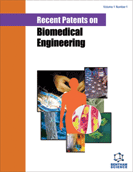Abstract
Current advancement in nanotechnology created novel solutions to improve drug delivery and enhance the efficacy of therapeutics for tissue regeneration and disease treatment. Nanomaterials can be designed and fabricated to have biomimetic characteristics and unique properties for controlling cellular functions (e.g. cell adhesion and stem cell differentiation) and delivering therapeutics more effectively. Different nanomaterials, including nanoparticles, nanofibers, nanospheres, and nanocomposites, are highlighted with key examples of in vitro and in vivo work. Specifically for bone regeneration, the use of nano-phase hydroxyapatite has received increased interest as it is naturally present in bone and has osteoinductive properties. Additionally, the use of nanotubes and nanofibers loaded with chondroprotective agents are utilized for cartilage regeneration. In addition to scaffold design, the use of different drugs (e.g. antibiotics, peptides, proteins, and growth factors) and their delivery rate are discussed. This review focuses on nanotechnology enabled innovative patents for targeted drug delivery to specific tissues (i.e. bone and cartilage) and prolonged multi-phase drug release.
Keywords: Nanomaterials, nanotechnology, drug delivery, bone, cartilage, tissue regeneration
 11
11

